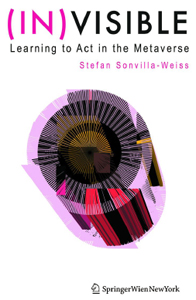Book Review of: (In)visible – Learning to Act in the Metaverse
The first chapter of the book, titled: “Global Data Space: Early Visionaries”, describes the nearly prophetic ideas of Paul Otlet, as well as some of the revolutionary work done by Otto Neurath, in order to give insight and perspective into the direction of our information society. Paul Otlet, for instance, envisioned the internet long before the technology necessary to create it even existed.
The second chapter is concerned with the concept of mirror worlds. Exploring the idea of virtual space as a copy of reality. This idea was first introduced by David Gelernter (1991), in his book: “Mirror Worlds”. A good example of the metaphor of reality mirrored in a virtual environment is Google Earth, which makes it possible to virtually travel the globe without moving an inch in the real world. We can examine reality through its digital counterpart, thus playing with the borders of time and space. Sonvilla-Weiss explains this complicated interplay of different dimensions using the example of a Firefox crop circle, created by a student group, devoted to promoting the use of Firefox.
“Lifelogging: A Concept of Sousveillance”, the third chapter, analyses the impact of lifelogging technologies on privacy and surveillance issues, while the fourth chapter explains how we maneuver through the digital world, blending the real and the virtual in our forms of communication, our personal space, and our way of participating.
In the fifth and final chapter, Sonvilla-Weiss combines the previous chapters into an analysis of the relationship between art and science. He explains in detail how shifting paradigms in cultural organization and knowledge construction influence this relationship, and how we must adapt and continue to work in this complex situation.
This book offers some interesting insights into digital network culture, discussing extensively the challenges and complexities concerned with learning to act in the metaverse. However, I feel that the author fails to come to any real conclusions. While containing many sweeping statements, the book does not seem to offer any solutions or even satisfactory explanations. It moves from one subject the next so fast that it seems to be more like a stream of consciousness than a structured narrative.
Possibly my negative feelings towards this book are due to my failure to theorize on the same level as abstraction as the author, or my inability to keep up with his fast-paced analysis. I guess we’ll have to see about that.